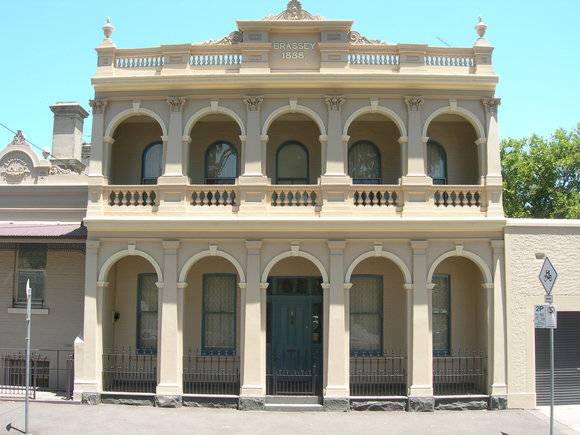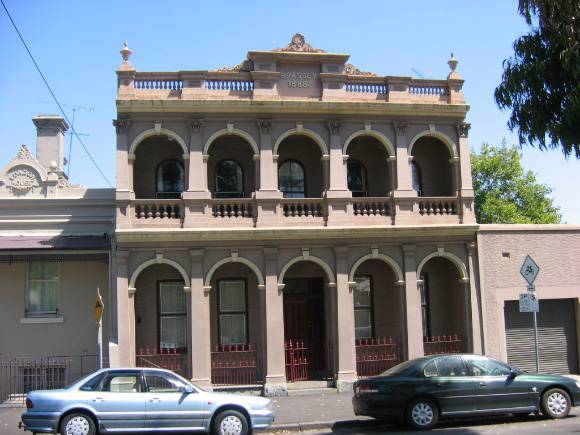| Back to search results » | Back to search page » |
|
BRASSEY HOUSE
Location111-115 CHAPMAN STREET AND 464 ABBOTSFORD STREET NORTH MELBOURNE, MELBOURNE CITY
File Number600019 (1)LevelRegistered |
|
Statement of Significance
What is significant?
Brassey House at 111 Chapman Street was erected in 1888 for Elizabeth Fry. A greengrocer of Curzon Street, she owned and occupied this large house from its construction in 1888 until 1895 when the owner is listed as Henry Fry, presumably her son who was a produce merchant of Victoria Street West Melbourne. Although the house was enlarged between 1890 and 1895, the rateable value was halved due to the general slump in property values. The five bay brick structure is constructed in the Victorian Academic Classical style. It has a centrally located entrance and a two tier stuccoed arcade on the street frontage. The arcade has a superimposed trabeated system of tall Doric pilasters on the ground floor and short pedestaled Corinthian pilasters on the first floor. It is surmounted by a parapet with balustrade and inscribed nameplate. The floor plan is L-shaped with three main rooms on the ground floor and three on the first floor. A basement is situated under the kitchen, which is accessible from external stairs.
How is it significant?
Brassey House is of aesthetic, architectural, social and historical significance to the State of Victoria.
Why is it significant?
Brassey House is of architectural and aesthetic importance as an excellent intact example of the architecture designed in the boom period of the 1880s. This is demonstrated in its decorative facade in the Victorian Academic Classical style. Of particular note is the arcading at both levels with a superimposed trabeated system of tall Doric pilasters on the ground floor and short pedestaled Corinthian pilasters on the first floor. Also of note are the painted and stained glass windows around the front door and the ornate balustraded parapet with nameplate. The interior is of particular note for its ceiling roses and intact marble fireplaces.
Brassey House is of historical and social significance for its associations with the boom period in Melbourne in the 1880s when residences were an embodiment of the owners' success in the world of free enterprise. Brassey House is a rare example of a residence built for a female at a time when few women owned property in their own right.
Group
Residential buildings (private)
Category
House








